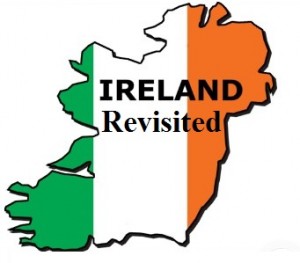Ireland Revisited: Part 25
The signing of the Good Friday Agreement heralded the beginning of peace and dialogue between the Nationalist/Republican and Unionist/Loyalist communities.
The people of Northern Ireland had spoken, with a whopping 71.2% in favour of the agreement and nearly 95% of the Republic of Ireland also voting in its favour. Against this backdrop of political and public will, there was cause for optimism.
 However, most people acknowledged that the road to peace would not be an easy route and there would be bumps along the way. None though, envisaged just how rocky the process would be in the following years. Signing the agreement was perhaps the easy part, implementing it was to prove a lot more difficult.
However, most people acknowledged that the road to peace would not be an easy route and there would be bumps along the way. None though, envisaged just how rocky the process would be in the following years. Signing the agreement was perhaps the easy part, implementing it was to prove a lot more difficult.
The first Assembly was elected some six months after the Good Friday Agreement, with the Ulster Unionists winning the largest proportion of the total vote, resulting in them commanding 28 seats. The largest Nationalist party, the SDLP, won an impressive 24 seats with Sinn Fein securing 18.
The first major stumbling block post-GFA was the release of paramilitary prisoners. Although the Unionist community already knew it was inevitable, there was still anger and hesitancy.
Their view was simple; any republicans currently in jail were terrorists who committed atrocities and thus, should serve the full time in jail. Despite the unionist skepticism and public outcry, early prisoner release did go ahead as planned.
The release of Patrick Magee, the man found guilty of planting the Provisional IRA bomb in Brighton at the Conservative Party Conference in 1984 caused a stir, with even the British Prime Minister at the time (Tony Blair) admitting that Magee’s release was “very hard to stomach”.
Nationalists and republicans too had their reservations about the Good Friday Agreement. Many wanted the immediate disbandment of the RUC, arguing that until this was completed and a new, more accountable, police service recognized by both sides of the community was brought about, there could be no movement on paramilitary decommissioning.
Unionists wanted immediate decommissioning and argued that until the Provisional IRA destroyed all their weapons and declared a total and unequivocal cessation then Sinn Fein could have no place in government.
Sinn Fein dismissed this and claimed that the British Government failed to keep its promise of demilitarizing the North, or at least wasn’t doing so quickly enough. A mutual distrust remained over the following months between Sinn Fein and unionists, both believing the other was reneging on their part of the agreement.
Both sides of the political spectrum demanded a tweaking of certain strands of the agreement but the British Government dismissed such proposals, with Tony Blair stating that the Good Friday Agreement was “the only show in town”.
The initial stalemate that existed eventually began to wane and in December 1999 the Assembly and Executive was established in anticipation of paramilitary decommissioning starting. This was not forthcoming and both institutions were suspended.
This merry-go-round of crises continued apace until both the Assembly and the Executive was re-established in May 2000, following a token gesture of decommissioning carried out by the Provisional IRA.
This was seen as a dramatic gesture of goodwill by the nationalist/republican community but was met with more cynicism in the unionist/loyalist community.
There was to be more crises however that had the potential to derail and destroy the peace process that was still in its infancy….
Short URL: https://newrytimes.com/?p=193













